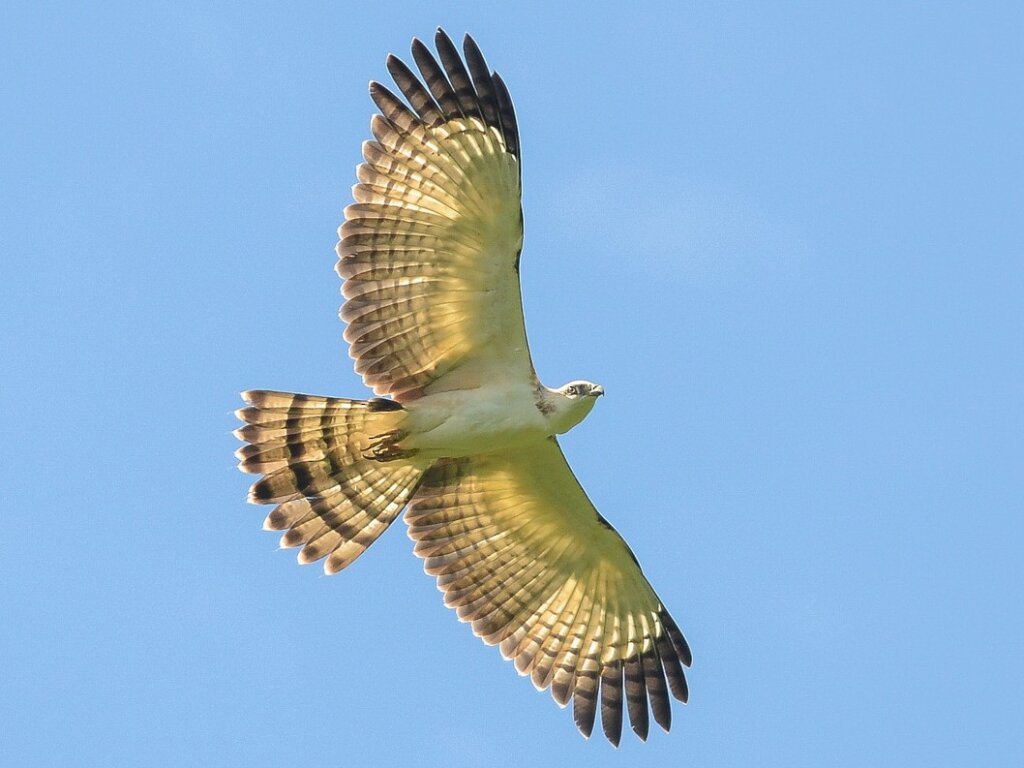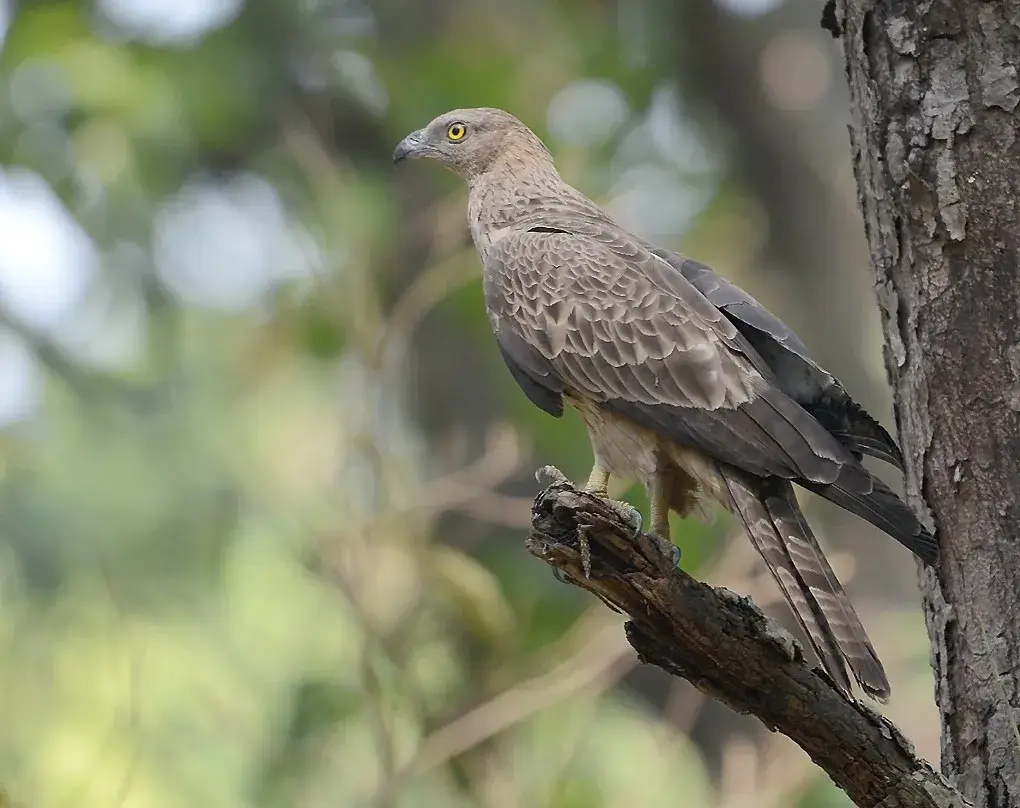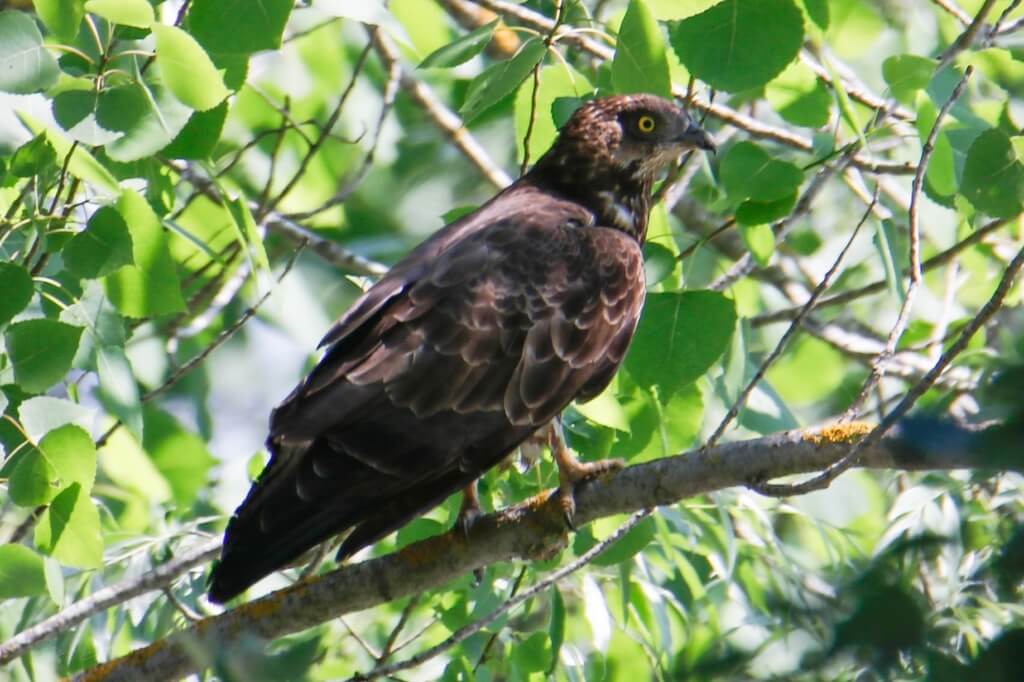Philippine Honey Buzzard: Habitat, Characteristics and Reproduction

The Philippine honey buzzard, or Pernis steereri, belongs to the Accipitridae family a group comprising about 200 species of diurnal birds of prey. Its scientific name comes from the American zoologist Joseph Beal Steere, while its common name derives from its feeding characteristics and the place where it resides.
Unlike other birds of prey, whose diet is based mainly on small mammals, this buzzard chooses to feed on the nests of wild bees and wasps. Read on to learn all about this amazing species.
Characteristics of the Philippine honey buzzard
Like all birds of prey, the Philippine honey buzzard has a powerful beak and strong claws for hunting its prey. Likewise, it has excellent vision and quite a well-developed sense of smell for its species. They’re usually about 60 centimeters (24 inches) long and weigh about 2 kilograms (4.4 lbs) in adulthood.
As for its plumage, which is mostly brown, it has striped patterns on its chest and belly. In addition, it’s characterized by a wide dark band at the tip of its tail and two narrower ones at the back.
On the other hand, its small head is adorned by a long flattened crest that stands out at the back, making it stand out from its wings during flight. Finally, its song is composed of two notes that sound like “weeee lew“, which it repeats at several intervals.

Habitat
As described above, this buzzard is native to the Philippines, and can only be observed here. It lives exclusively on 13 islands in the east, north and south of the country. Among these are the islands of Luzon, Catanduanes, Mindoro, Tablas, Masbate, Sámar, Leyte, Dinágat, Siargao, Bohol, Negros, Mindanao, and Basilan.
Its preferred habitat is tropical rainforests. It is generally found in mountainous terrain and plains, in areas from sea level to 2000 meters (6500 feet) above sea level.
Reproduction
This buzzard builds its nests with small branches and places them about 10 meters (6.6 feet) above the ground. The female usually lays 2 to 3 eggs per clutch, which are incubated by both parents for about 32 days. In this species, the young can fly 40 days after hatching.
Feeding of the Philippine honey buzzard
In the wild, birds of prey are mainly recognized for their incredible ability to hunt small mammals such as rabbits, hares, or mice. In fact, their entire anatomy is adapted to accomplish such actions. However, this buzzard is different from the rest because it obtains 90% of its food from the bee and wasp nests it finds in its environment.
Such is its hunting capacity that it watches and follows the insects to their honeycombs, and then pierces the nests with its beak and strong claws to obtain its food. This incredible bird consumes the honey, larvae, and adult insects housed in the cells of these burrows. In addition, it often carries the honeycombs home to feed the young chicks.

Moreover, thanks to the dense plumage covering its legs and body, the bird isn’t stung during its hunting activities. However, if it doesn’t find its preferred food source, this bird can also hunt mice and small lizards.
All cited sources were thoroughly reviewed by our team to ensure their quality, reliability, currency, and validity. The bibliography of this article was considered reliable and of academic or scientific accuracy.
- Yang SY, Walther BA, Weng GJ. Stop and Smell the Pollen: The Role of Olfaction and Vision of the Oriental Honey Buzzard in Identifying Food. PloS one. 2015;10(7):e0130191.
- Gamauf A, Haring E. Molecular phylogeny and biogeography of Honey‐buzzards (genera Pernis and Henicopernis). Journal of Zoological Systematics and Evolutionary Research. 2004;42:145-53.
- del Hoyo, J., N. Collar, and J. S. Marks (2020). Philippine Honey-buzzard(Pernis steerei), version 1.0. In Birds of the World (J. del Hoyo, A. Elliott, J. Sargatal, D. A. Christie, and E. de Juana, Editors). Cornell Lab of Ornithology, Ithaca, NY, USA
